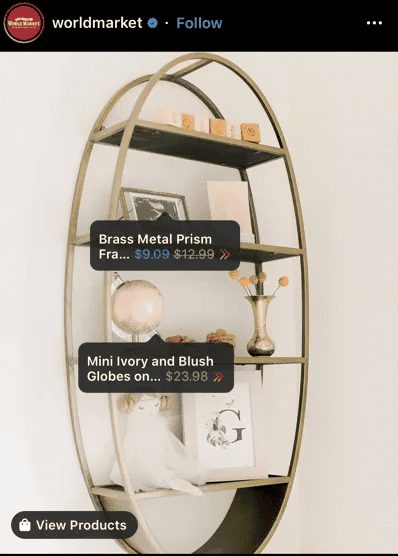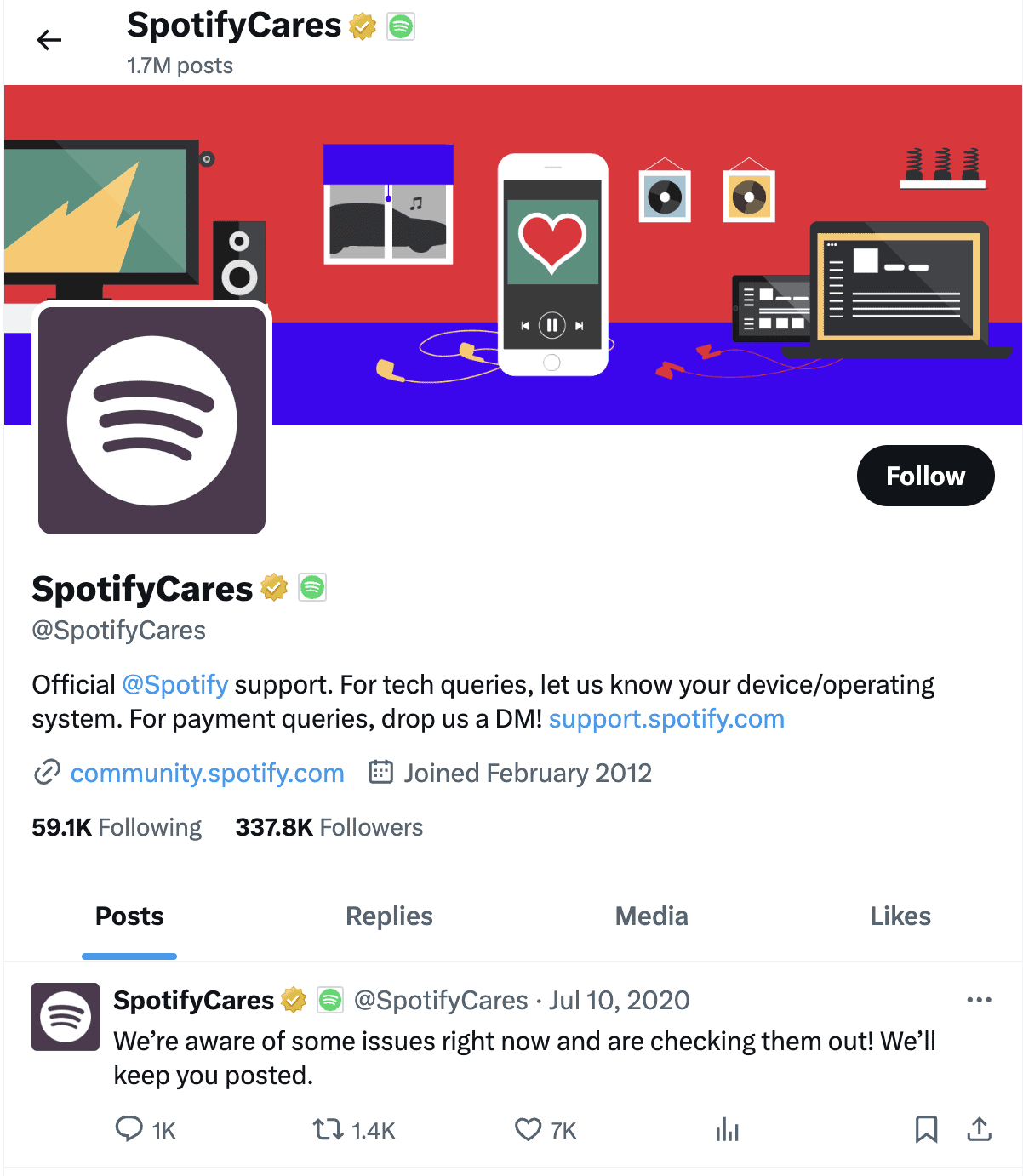As social media continues to play an increasingly significant role in our lives, it has become a crucial tool for businesses to connect with their audience at every stage of the customer journey.
Customer journey mapping is the process of visualizing the steps your customers take when engaging with your brand. By mapping out these interactions, you can gain valuable insights into your customers’ needs, preferences, and pain points. This allows you to optimize their experiences and foster long-lasting relationships.
In this blog post, we’ll dive deep into the topic of customer journey mapping, exploring its benefits and the pivotal role social media platforms play at each stage. You’ll also get a step-by-step guide on how to map your customer journey on social media. So, read on to learn more.
What is Customer Journey Mapping?
Customer journey mapping is a powerful tool that helps businesses visualize and understand the complete experience a customer has with their brand. It maps every interaction a customer has with your company, from their initial awareness to post-purchase support.
By mapping out the customer journey, you can gain valuable insights into your customers’ needs, preferences, and pain points at each stage of their journey. You can understand when and how an ideal customer is interacting with your brand. And how you can optimize these touch points and create a more personalized journey.
For example, let’s say you run an e-commerce store selling eco-friendly products and you want to promote the store online. By mapping your customer journey, you might discover that many customers abandon their shopping carts due to high shipping costs. Armed with this insight, you could offer free shipping promotions or implement a loyalty program to encourage customers to complete their purchases.
What are the Benefits of Customer Journey Mapping?
Customer journey mapping is a powerful process with tons of benefits such as:
- Improved customer experience: When you map out your customer’s journey, you can identify the areas where they might be having a tough time. This helps you make changes to improve their overall experience with your business.
- Increased customer loyalty: By understanding your customers’ needs and addressing them, you can build stronger relationships with them. This way, more loyal customers keep coming back to you.
- Enhanced customer insights: You get valuable information about your customer’s behavior, preferences, and expectations. You can use this data to make better decisions for your business.
- Improved communication: Understanding your customers’ preferences helps you communicate more effectively. This means you can provide them with the information they need in a way that makes sense to them.
- Streamlined processes: By identifying inefficiencies in the customer journey, you can streamline your processes and improve operational efficiency. This way, you can better manage your sales funnel.
- Better resource allocation: Customer journey mapping helps you allocate your resources more effectively. This ensures that you’re focusing on the most important aspects of the customer experience.
- Improved product development: By mapping your customers’ journey, you can develop products and services that better meet their expectations. This helps drive product-led growth.
- Enhanced marketing strategies: Customer journey mapping provides valuable insights for your marketing team. They can use this information to create more targeted and effective campaigns.
- Increased revenue: Social media helps with SEO by driving traffic to your site. Combine this with improved customer experience via CX tools, and you can increase customer satisfaction, loyalty, and ultimately, revenue. This means more money in your pocket!
The Role of Social Media in Different Stages of Customer Journey
Usually, customer journeys can be categorized into 5 broad stages—awareness, consideration, decision, retention, and advocacy.
No points for guessing here that social media plays a role in each of these customer journey stages. Let’s look at each one of them in detail:
1. Awareness
This is the stage where a potential customer becomes aware of your product or service. This stage is a significant part of your user acquisition funnel. This is the stage where people are just beginning to realize they have a problem that your product/service can address.
One powerful way to use social media for awareness is through targeted ads. Platforms like Facebook and Instagram allow you to create ads that reach people based on their interests, behaviors, and demographics.
Another popular strategy used by most B2B/B2C brands today is to share valuable content that addresses your target audience’s specific pain points. This could include blog posts, infographics, or short videos that provide helpful tips or insights.
Influencer marketing is another way to boost awareness on social media. Influencers already have an audience that trusts them and you can leverage this through various influencer marketing platforms. Gymshark, a popular sportswear brand uses this strategy.

2. Consideration
Once potential customers are aware of your brand, they move into the consideration stage, where they actively evaluate whether your product or service is the right fit for their needs. Social media can be a powerful tool for guiding customers and helping them make informed decisions.
One effective strategy here is to use social media to showcase customer reviews and testimonials. Seeing positive feedback from real customers can help build trust and credibility for your brand.
Another way to use social media in the consideration stage is by providing detailed product information and demonstrations. This could include product videos, webinars, or live Q&A sessions on platforms like Instagram, LinkedIn, or X.
Social media can also be used to offer special promotions or free trials during the consideration stage. For instance, Chili Piper’s post on LinkedIn is a good example of this.

3. Decision
The decision stage is where potential customers are ready to make a purchase. At this point, social media can play a critical role, giving them the last push.
One powerful way here is to create a sense of urgency or scarcity. For example, you could promote a limited-time sale or exclusive offer on your social media channels. This will encourage your potential customers to take action and make a purchase.
Another effective strategy is to use social media to provide exceptional customer service. When potential customers are on the verge of making a decision, they may have last-minute questions or concerns. You can use social media to address these issues quickly. You can help people feel confident in their decision to choose your brand.
Social media can also be used to create a seamless path to purchase. You can include clear calls-to-action and direct links to your website or online store. You can also create mobile video advertising and shoppable video ads on platforms like Facebook and Instagram.

4. Retention
The customer journey doesn’t end after a purchase is made. In fact, the retention stage is crucial for turning one-time buyers into loyal, repeat customers.
You can use social media for advocacy by creating a sense of community around your brand. This could involve hosting live Q&A sessions, encouraging user-generated content, or creating private groups for customers.
This fosters a sense of belonging and connection and ultimately helps with higher retention rates. Integrating your social media efforts with email marketing campaigns can further enhance retention by providing personalized content/offers directly to your customers’ inboxes.
Social media can also be used to provide exceptional customer service/support. By monitoring your social media channels for customer inquiries or complaints, you can address issues quickly and show that you value your customers’ satisfaction.
You can set alerts on social media channels for inquiries and complaints. You can also create dedicated social media profiles for customer service/support such as an Instagram account connected to a chatbot.
For example, SpotifyCares is a dedicated account for support and tech queries.

5. Advocacy
The ultimate goal of any customer journey is to turn satisfied customers into brand advocates who actively promote your business to others. Social media is a powerful tool for amplifying these advocacy efforts.
A great way to drive advocacy is to encourage user-generated content (UGC). This could involve running social media contests or campaigns that incentivize customers to share their experiences with your brand.
Another way is to create a referral program. This involves identifying your most loyal and influential customers and providing them with exclusive perks for referring your brand to their friends and family.
Social media can also be used to amplify positive reviews and testimonials from satisfied customers. By sharing these endorsements on your social media profiles, you can provide social proof and encourage others to try your products or services.
Here’s an example of a skincare brand using UGC on Instagram:

How do you Map Your Customer Journey on Social Media?
1. Identify Customer Persona
Customer personas are semi-fictional representations of your ideal customers based on data and research. By understanding who your customers are, what they need, and how they behave on social media, you can create more targeted and effective strategies.
To create customer personas, you can gather data from your existing customers. This could include demographic information, purchasing behavior, and specifically social media activity. You can also conduct surveys or interviews to gain deeper insights.
Once you have this data, look for patterns and create a social media avatar of your ideal customer. You’ll be referring to this more and more as we progress through the social media customer journey mapping.
2. Define the Stages
Once you have identified your customer personas, the next step is to define the stages of their journey on social media. These stages typically include awareness, consideration, decision, retention, and advocacy, as discussed earlier.
To map out these stages, consider the specific actions and interactions that customers have with your brand on social media at each point in their journey. You can understand the journeys that your existing customers took.
By clearly defining these stages and the corresponding customer actions, you can create a roadmap for guiding customers through their journey with your brand on social media. This will help you develop strategies to optimize each stage for maximum impact.
3. Identify Customer Touch Points
To identify these touchpoints, consider all the ways that customers might encounter or engage with your brand on each social media platform. This could include seeing a sponsored post, reading a product review, watching a live video, checking your Instagram bio link, or interacting with a chatbot. Make a list of all the potential touchpoints and map them to the corresponding stages of the customer journey.
Look for opportunities to create a logical flow from one touchpoint to the next. Such as including a link to a product page in a sponsored post or following up with a customer who left a comment on a live video.
4. Analyze Gaps
The next step involves taking a critical look at each touchpoint and evaluating how effectively it meets the needs and expectations of your audience.
You can start by reviewing your social media metrics and customer feedback to identify any points of friction or drop-off in the customer journey.
For example, if you notice a high bounce rate on a particular product page shared on social media, that could indicate a gap in the information provided or the user experience. Similarly, if customers are consistently asking the same questions in the comments of your posts, that could suggest a need for clearer communication or more accessible resources.
Benchmarking your social media presence against competitors and industry best practices is also important. Look for opportunities to differentiate your brand and provide a more seamless, engaging customer experience.
5. Optimize the Customer Journey
Start by prioritizing the gaps you identified based on their potential impact and feasibility. Focus on the areas that are most critical to your business goals and customer needs. And develop a plan to address them systematically.
Next, optimize and refine your approach based on the insights and improvements you’ve identified. This is an ongoing process that requires regular monitoring, testing, and adjustment. This will ensure that you’re always providing the best possible experience for your customers.
One key aspect of optimization is to regularly review your social media metrics and customer feedback to track your progress and identify new opportunities for improvement. Use tools like social media analytics dashboards and customer surveys to gather data on how customers are interacting with your brand. And where they may be experiencing friction or frustration.
By continuously optimizing and refining your social media customer journey, you can stay ahead of the curve. You can provide a truly exceptional experience for your customers at every touchpoint and drive a significant increase in your revenue.
Final Thoughts on the Customer Journey
Mapping your customer journey on social media is a powerful way to understand and optimize the way customers interact with your brand, considering how pivotal social media is in every customer’s journey today.
This brief guide on social media customer journey mapping will help you move your customers to the center of your social media strategy. You will continuously optimize their journey, build stronger relationships, and drive more conversions.

